In Grenada it was time to bid farewell to the friends we made in Surinam, Tiki Mas and Cloud 9, and continue sailing north.
As some say, not everything is palm trees and piña coladas: I suffered a heat stroke and got dehydrated. Sailing upwind, without the company of our friends did not make Jos’ birthday the best. To add to this, Jos caught a tasty wahoo and threw it back, mistaking it for a barracuda.


We did learn the important lesson that in case of dehydration the desalted water from the watermaker has to be supplemented with added salts. The captain had to do extra hours to also fulfill the role of ship’s surgeon, and once he stuffed his patient with ORS, sugar tea, fruit juice and miso soup I felt much better.
Thus, feeling a bit gloomy, we sped up via Carriacou, Union island, St. Vincent and St. Lucia, barely stopping for clearing in and out of customs and immigration, until we reached Rodney Bay in St. Lucia and met Adventure, another Dutch boat of the Viking Explorer’s fleet. Together we visited the town of Castries and enjoyed some straining hikes.








By that time we were in need of a bit of civilization and relax, good food and wine… and where do Dutch people go for a holiday? Of course France.


So, together with Adventure we set sail to Martinique, and joined a whole fleet of Dutch sailingboats on their French holiday.
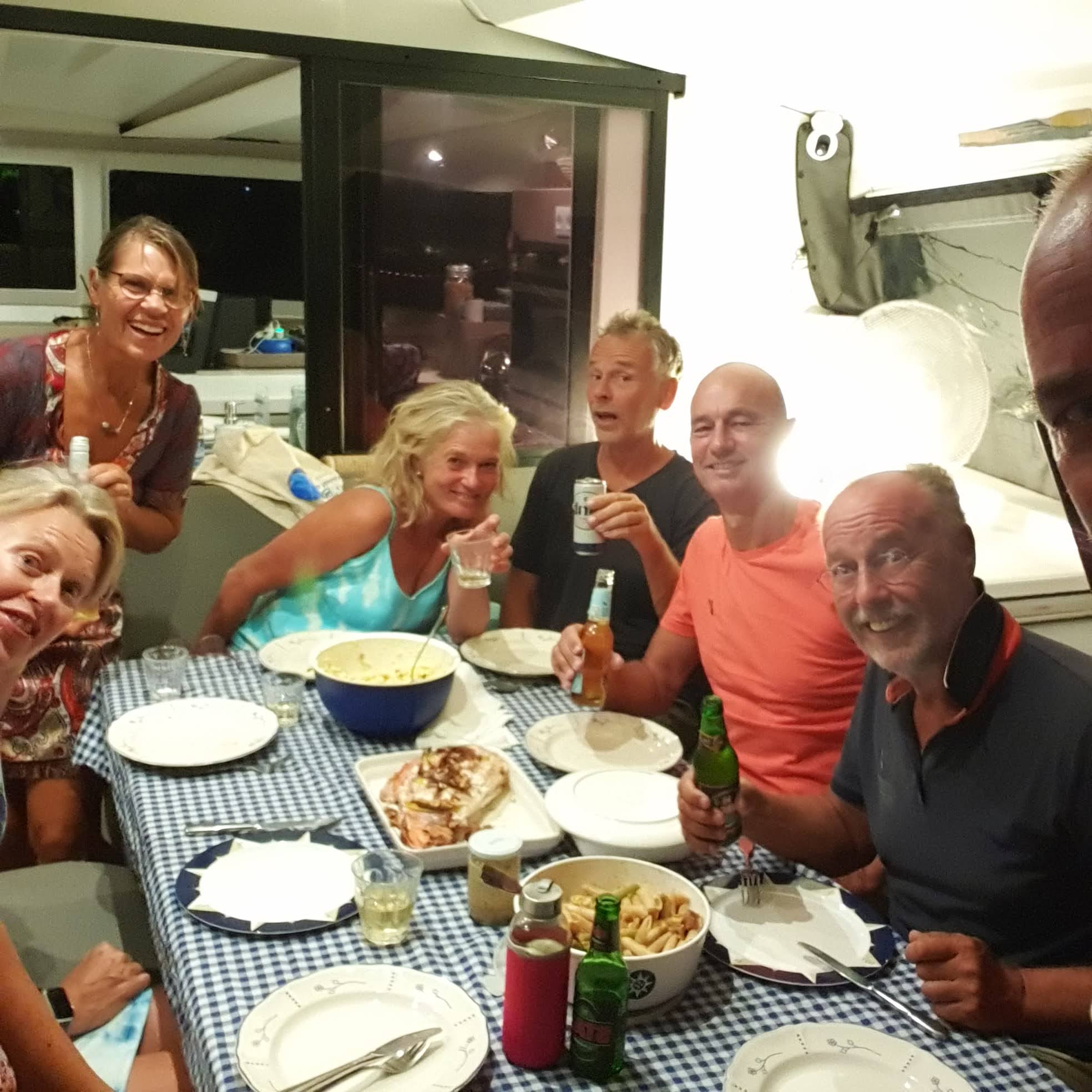
Martinique is the Caribbean wilderness varnished with a layer of French culture. The houses are painted in bright colors, the roads are paved, the streets are clean; there is always a boulangerie around the corner and champagne in the Carrefour supermarket. And yet, the rugged coast is lined with black sand and mangroves, the volcano Mont Pelé wiped out the town of saint Pierre only 120 years ago and you can endlessly hike in the tropical jungle wading through the mud.
The island of St. Marie, in the windward coast can be reached walking over a sandy isthmus at low tide from February to April; we were lucky enough to be just in time to make it.
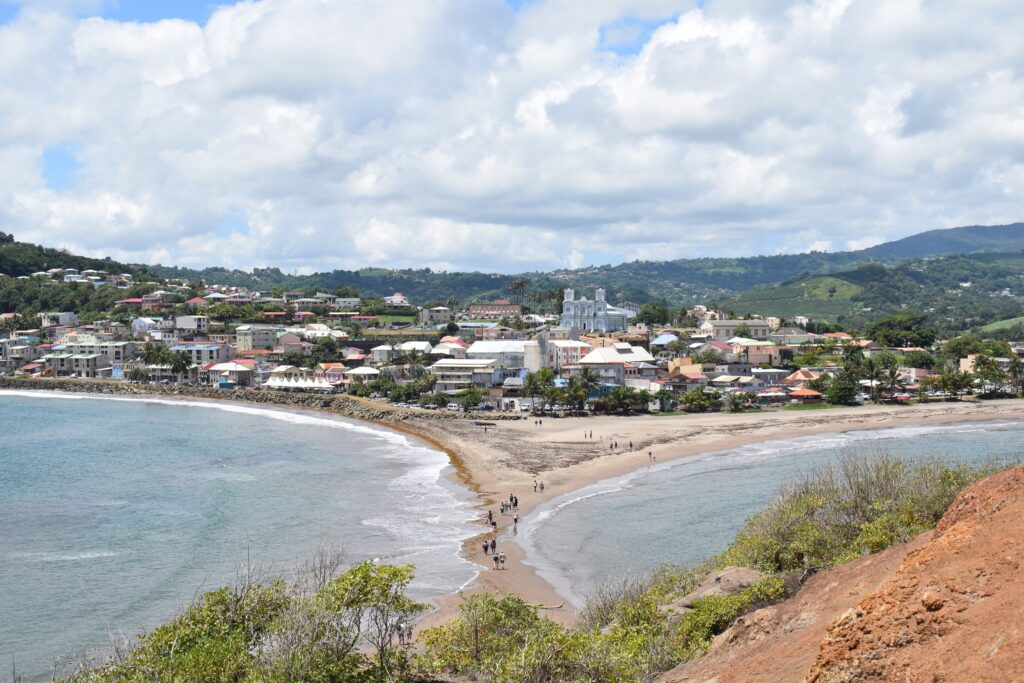
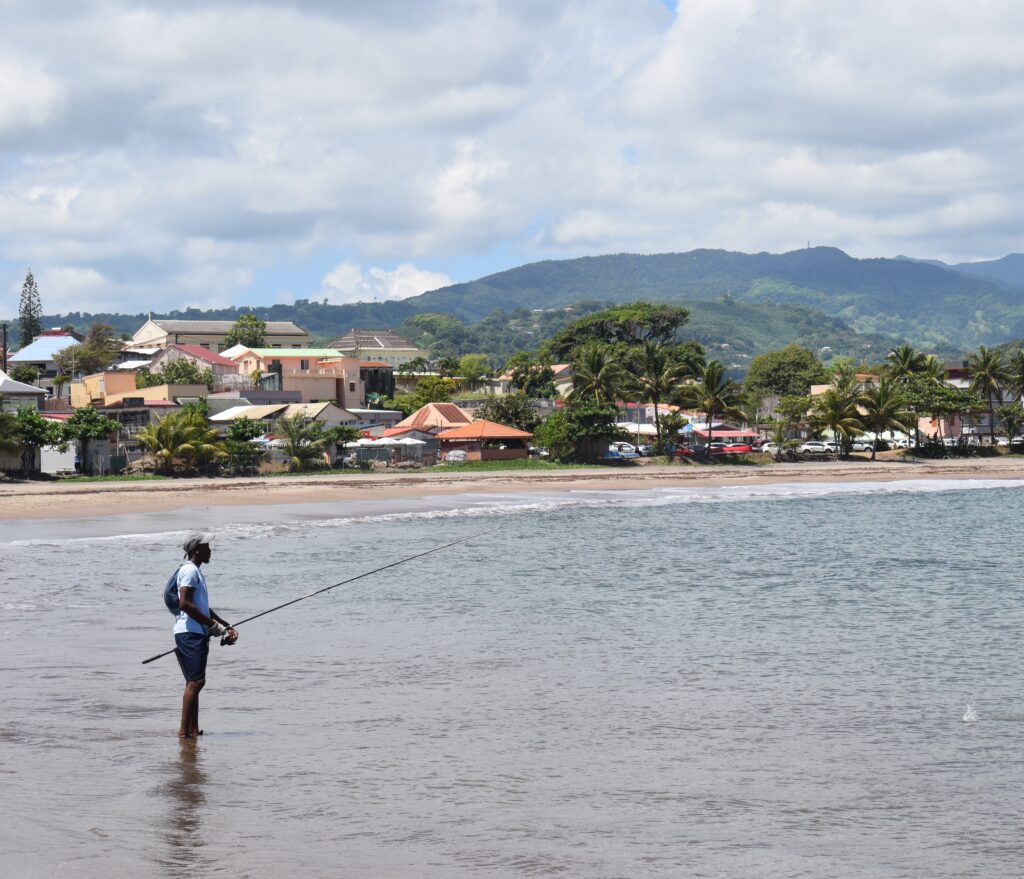
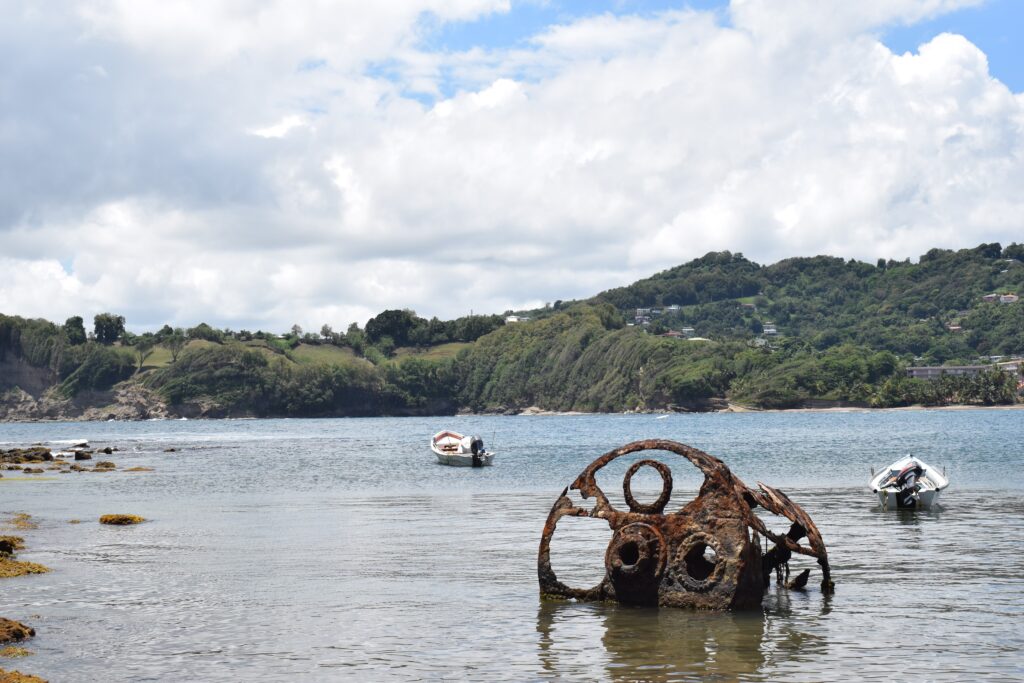
We also walked through the mangroves in the Caravelle peninsula, our second mangrove experience after a beautiful kayak trip with the other dutchies near Le Marin in the south.
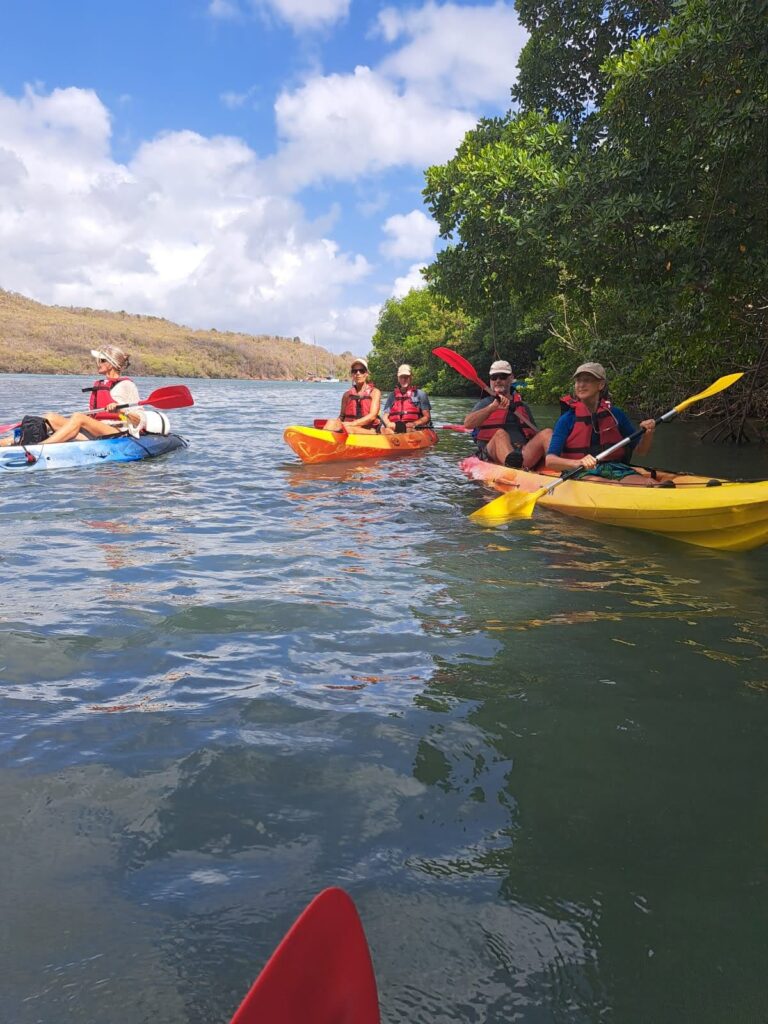

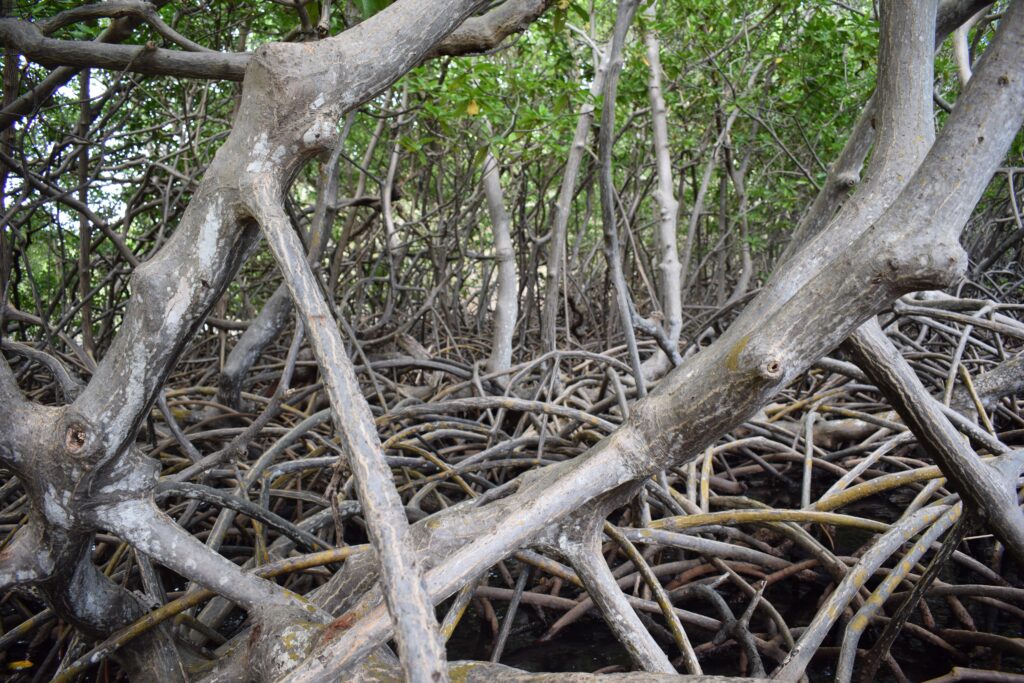
Le Marin is the one of the largest anchorages in Martinique, as well as Anse Mitan, where lots of boats anchor for weeks or months.
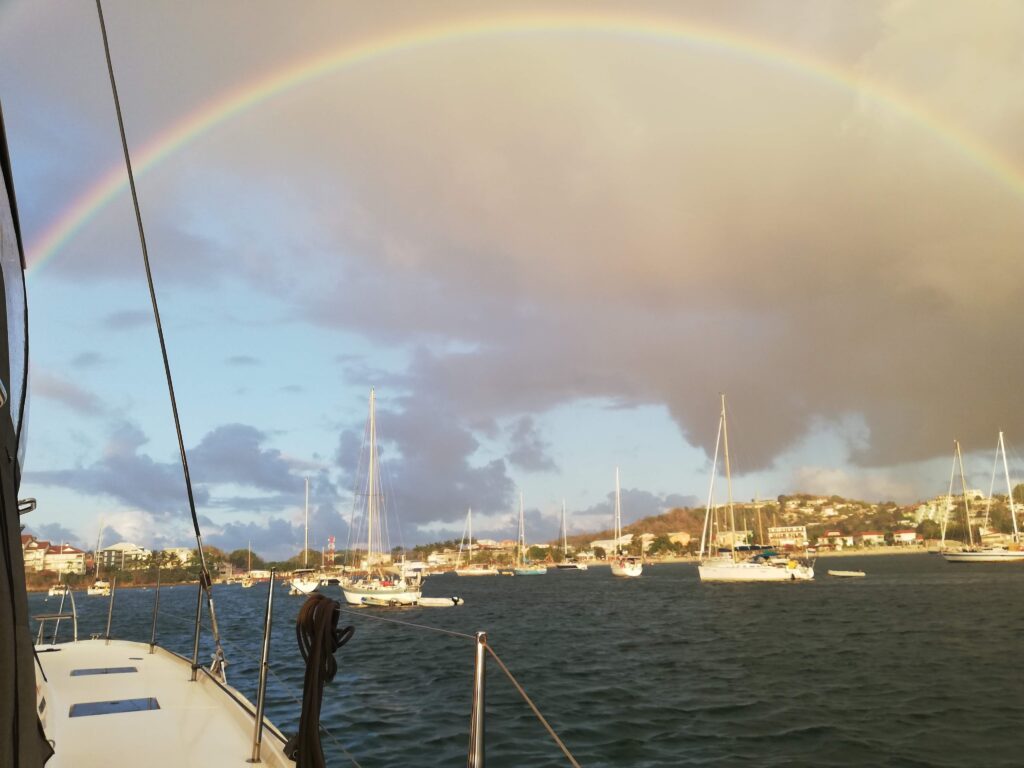
The leeward coast is further full with small coves offering excellent snorkeling, so we anchored in some small bays for lunch and snorkeling and moved on for the night to the more protected anchorages.
We explored the inland with Hugo and Ellen by rental car and public transport and a lot of walking.
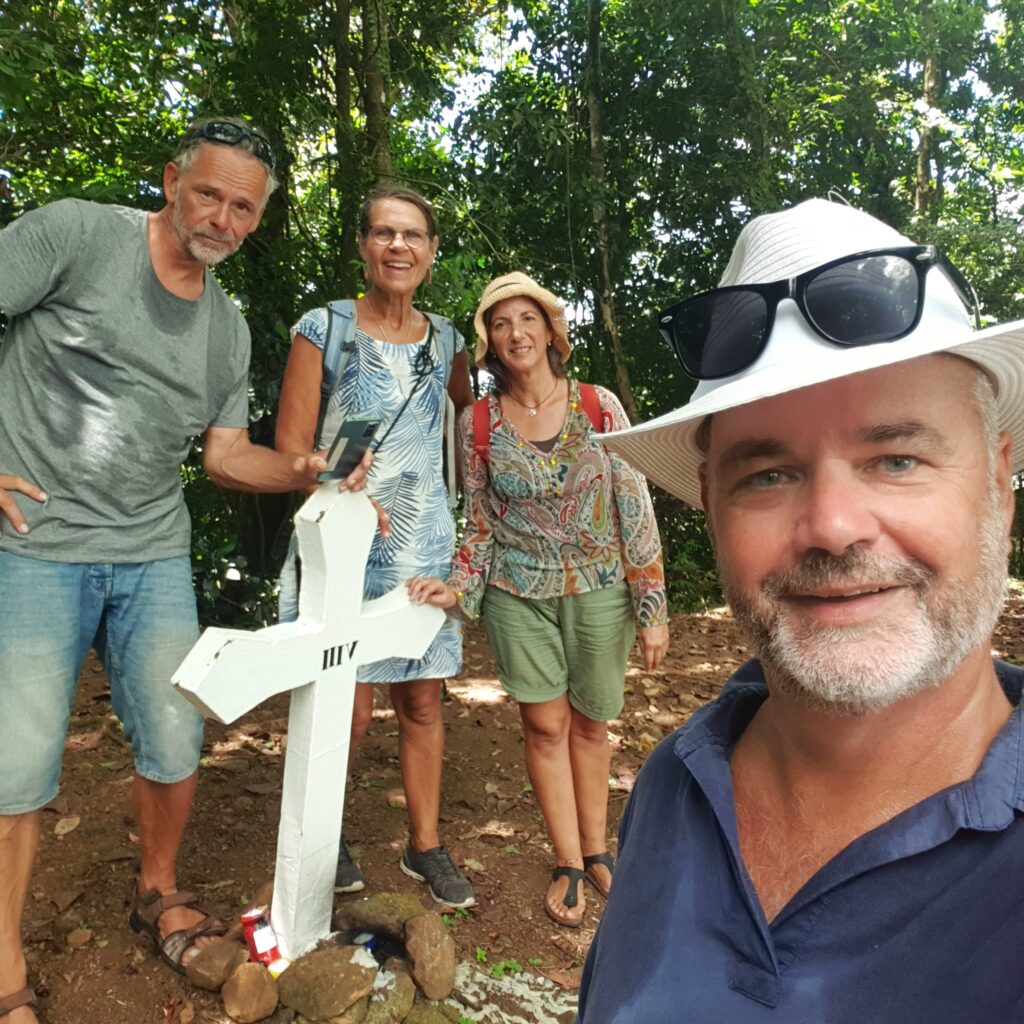
La Savanne des esclaves is a very interesting open air museum about the slavery; we also visited a banana plantation, a rum distillery, the Gauguin museum (he lived in Martinique 4 months) and a beautiful zoo set up in a former plantation.











Our favorite place in Martinique is the town of St. Pierre, by the coast at the foot of the Mont Pelé, the volcano which destroyed the town in 1902 in a pyroclastic blast killing thousends and sinking all the ships. The bay is, thus, littered with shipwrecks which makes very interesting diving and snorkeling. In St. Pierre we also visited the newest cathedral ever! When we went in it had been open only for 10 days.
In St. Pierre we met again with Migaloo and Blue, also Viking explorers who will be also sailing to Dominica, as the other Dutch boats as well in the coming days.
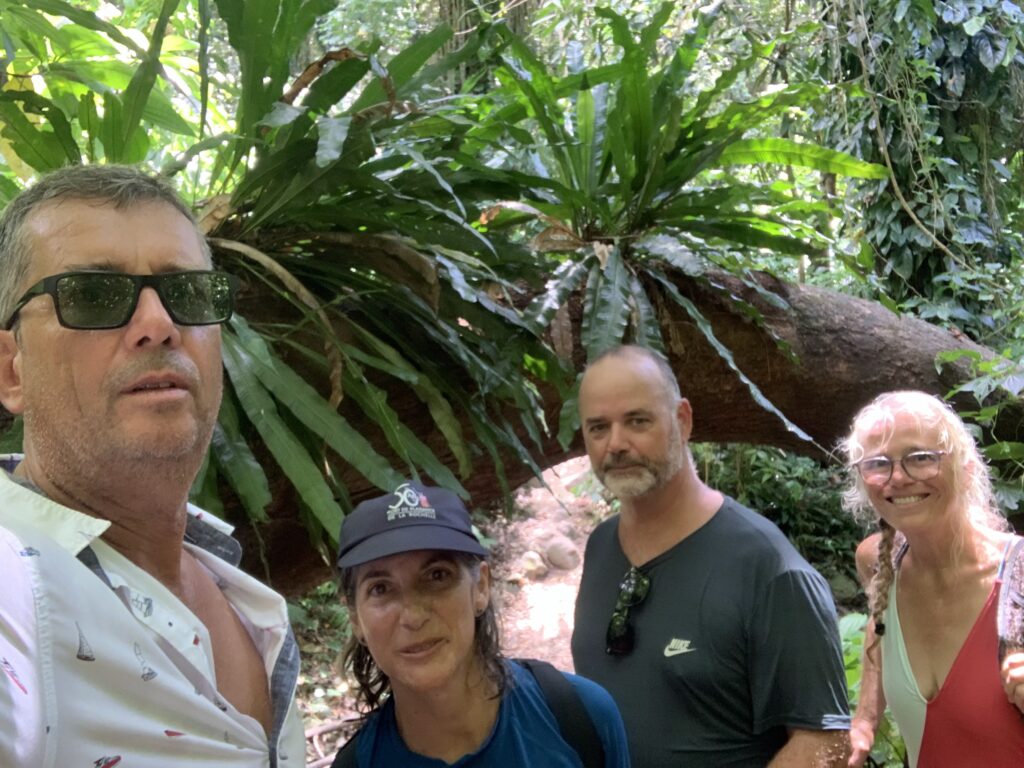
Hiking in anse Couleuvre with John and Cora of Migaloo to the waterfall.
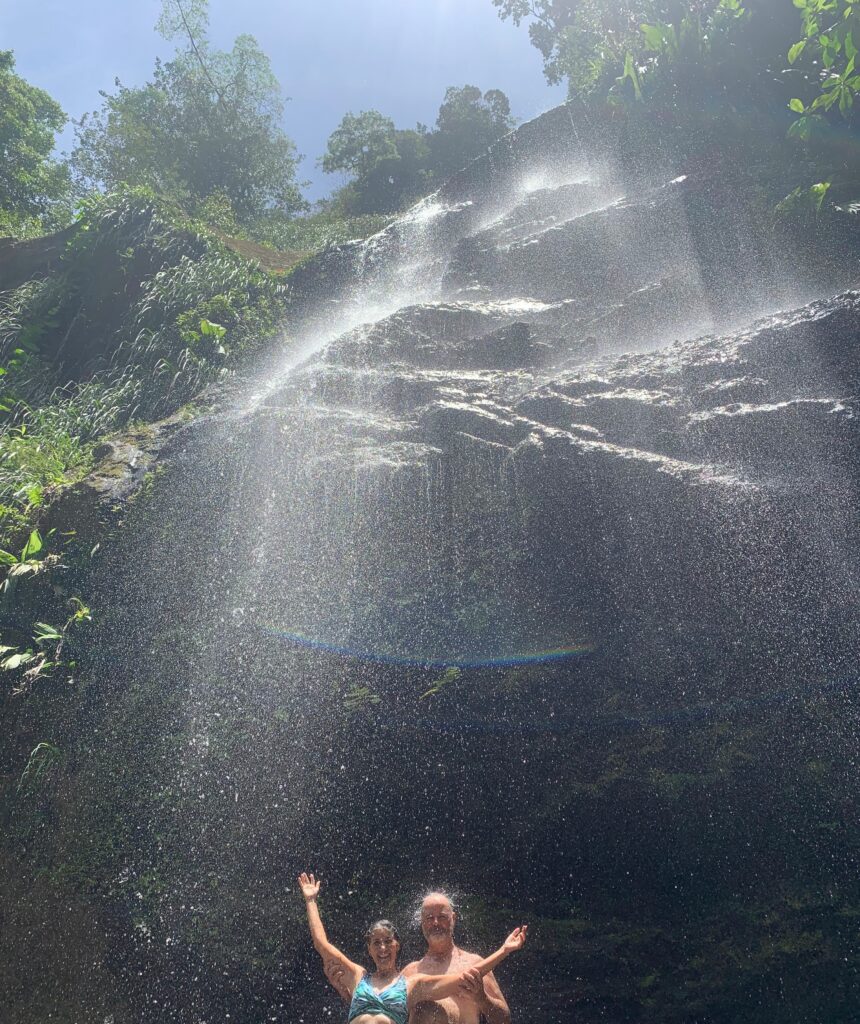
We have enjoyed Martinique so much that we overstayed our planned one week by more than double, and there are some places we still would like to visit (maybe on the way back). But now it’s time again to sail into the wilderness, to Dominica, and leave behind the French comfort.
Prachtig, Jos, en erg leuke foto’s, laat maar doorkomen 😀